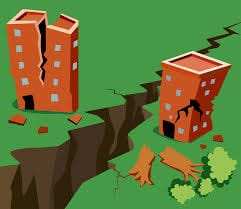Early Morning Jolt Alarms Residents
A powerful earthquake rattled the Himalayan region early this morning, triggering panic among residents in Tibet, Nepal, and northern India. It struck near Shigatse in the Tibet Autonomous Region of China, registering a magnitude of 7.0 at approximately 9:05 AM local time. Its tremors rippled as far as Kathmandu Valley and northern Indian cities like New Delhi.
In Kathmandu, intense shaking at approximately 6:45 AM drove residents out of their homes in alarm. Streets swiftly filled with anxious crowds, and subsequent aftershocks later in the morning deepened their unease.
Epicenter and Seismic Details
Early seismic reports indicate that a 7.0-magnitude earthquake struck near Shigatse, Tibet, with some sources suggesting a possible revision to 7.1. The epicenter lay about 91 kilometers (56 miles) from Lobuche, Nepal, a region closely tied to the Himalayan fault lines. Measuring approximately 10 kilometers (6 miles) deep, the quake was classified as a shallow earthquake, a type notorious for causing stronger surface shaking and potential damage.
Widespread Tremors in Nepal and India
Though the epicenter was in Tibet, the effects were widespread. Residents from western Nepal to Kathmandu Valley reported strong shaking. In India, tremors reached as far south as Delhi-NCR, sparking alerts on social media and news platforms. No major injuries or fatalities have been confirmed yet, but the intensity and reach of the tremor have raised concern among authorities and the public.
Nepalese emergency services swiftly went on high alert following the quake, while disaster response teams moved in to assess critical infrastructure, inspecting roads, bridges, and public buildings for potential damage.
Ongoing Tectonic Activity Raises Concerns
The Indian and Eurasian tectonic plates collide, making the Himalayan region one of the world’s most seismically active zones. Just a day before this morning’s earthquake, a smaller tremor rattled the same area, heightening concerns that more seismic activity could follow.
Experts believe this pattern may indicate an increased phase of tectonic tension in the region. As geologists continue to monitor the fault lines, the public has been advised to stay alert and follow safety protocols.
“We strongly urge everyone to remain cautious and stay away from damaged structures until proper inspections are done,” said a senior official from Nepal’s National Earthquake Monitoring Center.
Public Reaction and Safety Measures
Immediately after the earthquake, people turned to social media to share their experiences. Videos and photos showed people standing in open fields, streets crowded with families, and minor cracks appearing in older buildings. While panic was evident, many praised the quick response of emergency personnel and local government units.
Local authorities are now carrying out structural inspections and urging citizens to keep emergency kits and essentials within reach. Power and communication networks remain mostly unaffected, although brief outages were reported in some rural areas.
A Wake-Up Call for Preparedness
The earthquake serves as a powerful reminder of the seismic risks that hover over the Himalayan belt. It underscores the need for better infrastructure, early warning systems, and public awareness campaigns.
While today’s tremor did not lead to a large-scale disaster, it has reignited concerns that the next major quake could be even more damaging if communities are not well-prepared.


 Trump Slaps Tariffs on Asian Nations, but India Secures Exemption
Trump Slaps Tariffs on Asian Nations, but India Secures Exemption  How InnoMake Shoes Make Navigation Safer for the Blind
How InnoMake Shoes Make Navigation Safer for the Blind  New Coronavirus Wave Hits India: What We Know
New Coronavirus Wave Hits India: What We Know  Trump Threatens 25% Tariff on iPhones and Other Smartphones
Trump Threatens 25% Tariff on iPhones and Other Smartphones  Did Trump Halt Harvard’s Foreign Enrollment?
Did Trump Halt Harvard’s Foreign Enrollment?  World’s Most Populous Cities: Population, Living Conditions, and Health
World’s Most Populous Cities: Population, Living Conditions, and Health